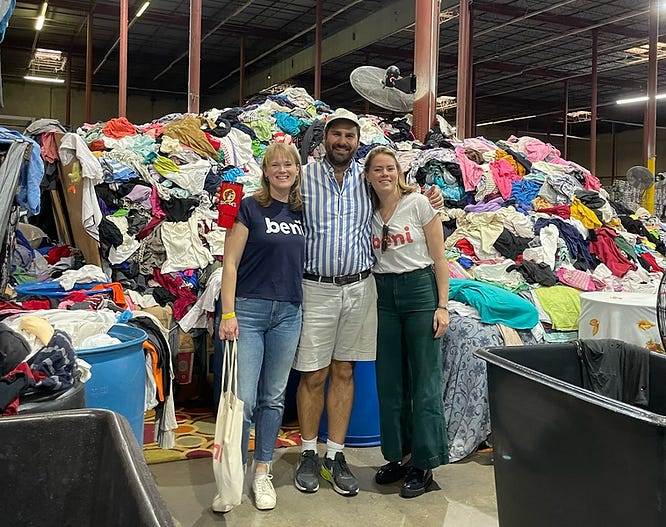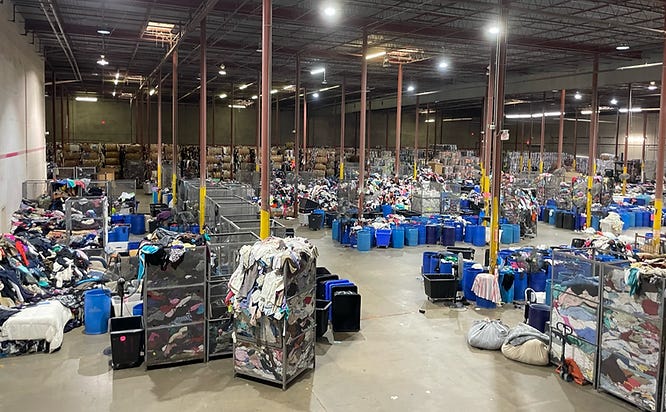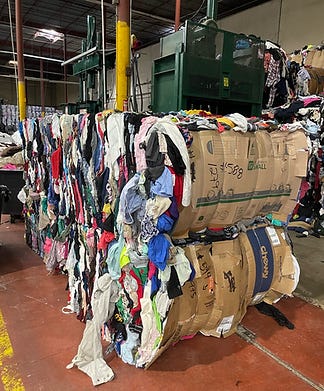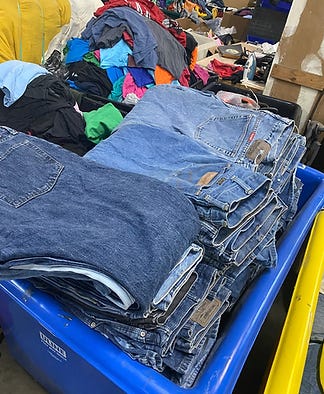What We Learned By Visiting A Rag House Will Shock You
The Beni team recently visited a textile recycling facility, also known as a “rag house”, in Houston.
Clothes, clothes everywhere
The Beni team recently visited a textile recycling facility, also known as a “rag house”, in Houston. It’s hard to describe the feeling of walking into a warehouse full of discarded clothes. And when I say full, I mean full. When we walked in, we were immediately surrounded by, literally, millions of pounds of clothing. Clothes in piles, bales, bins, and barrels – everywhere, more clothes. I had a hard time wrapping my head around the reality that in just this one warehouse, on this one day, there were millions of individual items of clothing in this one warehouse. It’s so massive that it almost seemed fake.
Luckily, we had Topper Luciani, CEO and Founder of Goodfair, to fearlessly guide step-by-step through the process of the rag house and how Goodfair fit into the massive system.
Pictured Here: Sarah Pinner (CEO, Co-Founder of Beni), Topper Luciani (CEO, Founder of Goodfair), Kate Sanner (CMO of Beni) touring the rebag facility in Houston.
Alright, now let’s go through it together:
One 1000lbs bale of 'mixed rags' -- this facility gets more than 40 of these every single day
First, the business purchases and receives thousand-pound bales of “mixed rags.” “Mixed rags” are made up of clothing items from thrift stores like GoodWill that did not sell after being on the floor for a few weeks or items that were not put up for sale due to flaws such as missing buttons, stains, etc. This one facility alone receives close to a quarter million pounds of mixed rags every day.
The mixed rag bales are then opened, and clothes are sorted into general categories (shirts, pants, etc). Next, the categorized clothing go to their respective stations where they are sorted based on quality.
The usable and sellable clothing in each category is baled into 100lb bales to be sold as garments (more below). The clothing that’s unusable gets re-baled into 1,000-pound bales and sold for cheap - like $0.01 per pound - sold for installation, recyclers, etc.
Ok, so where do all these clothes go after this huge sorting and categorizing effort? As mentioned, for the (massive amount of) clothing not sold as garments are baled and sold cheaply and the material used for lower-value applications like installation or, in very few cases, to be recycled back into fibers for clothing.
As for the usable 100lb bales, while there are some businesses like Goodfair who purchase bales to redistribute domestically, an estimated 50-70% of donated clothing in the U.S. eventually end up overseas. Clothing from this facility typically goes to countries in Latin America and Africa, where garments are then (ideally) donated or sold in secondhand markets and stores.
Goodfair jeans getting ready to be inventoried
Goodfair jackets waiting to be photographed
However, given the sheer volume of poor quality clothing, a lot ends up getting burned or landfilled. For example, in Accra, Ghana, “close to 40% of whatever shipments that are coming on a daily basis ends up to be of no value” and have to be dumped. I recommend reading this article for a powerful deep dive into the reality of where clothing ends up once it is shipped overseas.
Bales of clothes getting ready to be discarded
I admit that when I was standing in the facility surrounded by clothing, the problem of overproduction and overconsumption of clothing felt incomprehensibly huge. But, with any massive problem, we have to take it one step at a time. With Beni we aim to make resale the new norm and, by doing so, to help shift the system to produce and consume, and eventually dump, significantly less new clothing.
Some additional resources if you're interested:
https://sustainablereview.com/what-happens-donated-clothing/










